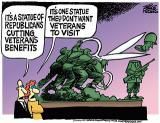February 13, 2012 - The first half of the 20th century saw 2 world wars, indiscriminate aerial bombing of civilians, the dropping of the atomic bomb, and the Holocaust—all of which created intense trauma for soldiers and civilians. Yet it was not until the American intervention in a post-colonial civil war in southeast Asia that the psychiatric community in the 1970s formally described what we now call PTSD. Grinker and Spiegel, American psychiatrists, published War Neurosis in North Africa: The Tunisian Campaign1 in 1943 and, in 1945, Men Under Stress,2 which addressed the impact of stress on members of the American Army Air Corps. In some ways their accounts serve as a forerunner of later work on PTSD.
Here, I review factors that led to the codification during the Vietnam War of the symptoms and behaviors that today constitute the diagnosis of PTSD. I also examine the factors that delayed the process of identifying this disorder to well after the major global upheavals of the first half of the 20th century. read more>>>























No comments:
Post a Comment